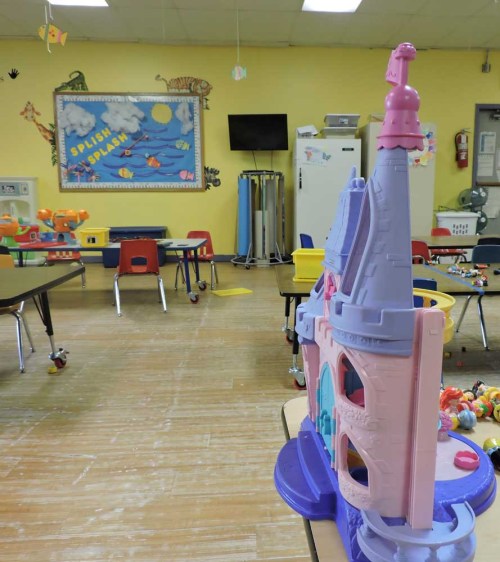PROGRESS: Finding care is a conundrum in Umatilla County
Published 9:00 am Saturday, June 29, 2019

- L’il Angels Child Care and Pre School provides care for children over 30 months of age.
UMATILLA COUNTY — In any capacity, the emotional responsibility of placing a loved one, be it a child or an aging relative, in someone else’s care is heavy. It can be harder when options for care are scarce.
In Umatilla County alone, according to 2018 U.S. Census, nearly a quarter of the population is under the age of 5 or over 65. Depending on circumstances, this slice of the population may require extra assistance in the form of regulated care. When searching for care, it quickly becomes clear that availability and affordability are big factors in the game.
Finding regulated child care
According to a study from Oregon State University, which the East Oregonian reported on last year, for every three children in Umatilla County, there is only one regulated child care slot available.
Current accounts of availability in child care vary, but according to providers and parents alike, the trend continues.
For the last 40 years, Mary Shaver has owned Busy Bee Preschool in Hermiston. Right now, she has open availability and said June is one of her slowest months. But a few months ago, she was at capacity and had a waiting list.
“Sometimes I get two or three calls a day, every day. Sometimes I don’t hear anything,” Shaver said.
For her, customer demand is higher for younger children than older kids who need after-school care.
She said parents are particularly pressed to find spaces for their infants below 2 years old. Shaver herself requires children at her family child care home to be above 2 years old, and she isn’t alone.
Stephanie Cronen of Hermiston was looking for child care while still pregnant with her now 5-month-old baby. She didn’t find what she was looking for until a few weeks before returning to her work as an administrator for a residential facility in Boardman.
Cronen ended up finding certified family home-based child care in Boardman, which is close to her work but far from her home.
She says her support system was much bigger when she had her first two children, and she was able to rely on family and friends to help with care while she worked. But things are different since she moved to the area.
“Timing is huge,” Cronen said.
AnneMarie Kunkle, owner of L’il Angels Child Care and Pre School, said she has known people who have paid for three months during their pregnancy to secure a spot for their infant after birth.
She advises expectant parents to start looking now.
L’il Angels currently has open spots, but does not accept children under 24 months.
Regulations, according to the National Database of Childcare in 2017, limit the amount of children under 24 months who can be in a regulated care facility.
For a child care center, there must be one adult for every four infants. A registered family child care home can take two infants at a time, and 10 children in general. A certified family child care home can take more than two infants if more training is completed.
“I think that ratio is hugely important. Infants are really difficult,” Kunkle said.
Having too few staff can lead to physical harm for child care workers catering to infants, she said.
Staying up with regulations can be a challenge that limits the care as well.
“It becomes a financial issue,” Kunkle said, “Child care providers really have all out-of-pocket expenses.”
She said it is also hard to find time to take classes required to stay updated on regulations, and that she is one of few in the area she knows of who pay staff hours for these classes.
“Regulation can sometimes prevent people from taking steps,” Lisa Kopetski, owner of the certified family child care home Magic Years Daycare, said.
Magic Years Daycare, with a capacity of 16, currently has a waitlist and does accept children under 2 years old.
She said that this shortage of regulated care means a lot of parents must opt for unregulated care.
The waiting list is long at Atwa Miyanasma (Precious Children) Learning Center, according to child care provider Samantha Azure.
The Learning Center provides care for children 6 weeks of age to 5 years to tribal families and Confederated Tribes of the Umatilla Indian Reservation employees, and will be moving into the newly constructed education center on CTUIR this summer.
Azure hopes the larger space means an increase in the number of children Atwa Miyanasma can take.
“As long as we can find enough staff,” she said, noting that finding qualified caretakers is difficult in the area.
Those who are waiting to place their child at the center usually opt for private care among friends and family for the time being, Azure said.
Tobie Sass, director of Child Care Resource & Referral in Hermiston, said the child care desert issue isn’t just limited to Oregon or even the U.S.
It’s happening everywhere, and having non-licensed providers become regulated could help. So could more businesses, like Amazon, providing on-site care.
She said her network is trying to make it as easy as possible for child care providers to care for kids.
Right now, there are over 500 child care providers of different types of regulation in Northeast Oregon, Sass said. She hopes to help double that number soon.
CCR&R can provide resources to child care providers, ranging from low-cost classes, first-aid kit supplements, and more. The nonprofit can even lend out toys to providers, and send faxes. Sass said all someone has to do is just walk in.
Finding elder care
Finding elder care in the community can be challenging as well.
“Finding caregivers is always a problem,” said then-director Tara Bishop of the charitable non-profit Community Action Program East Central Oregon senior services. “Especially in rural areas it gets difficult, in rural areas there just aren’t people.”
In Umatilla County, according to the Community Health Assessment released by St. Anthony Hospital and Good Shepherd Health Care System, 7% of adults were in search of elderly care or assistance in 2018.
A 2018 study put out by Genworth Financial estimates that placing an older adult in an assisted living facility could cost Oregonians over $4,000 a month. Bishop says this number can be as high as $8,000.
“That’s why the Oregon Project Independence program is really good,” said Bishop.
OPI is an alternative to Medicaid Long Term Care.
Since the 1970s, the project has aimed to delay the rate at which elderly people turn to nursing homes and assisted-living facilities by providing access to in-home services on a sliding scale.
“People thrive in their own homes and it cuts down on costs,” Bishop said.
Currently, CAPECO is working to expand its network from just Umatilla and Morrow counties to Hood River, Wasco, Sherman, Gilliam and Wheeler counties, a move which was declared last spring.
Bishop recommends those seeking elderly care call the Aging and Disability Resource Connection at 1-855-673-2372, describing it as a “211” for seniors and people with disabilities looking to navigate what she described as a “complicated web” of aging and disability services.






